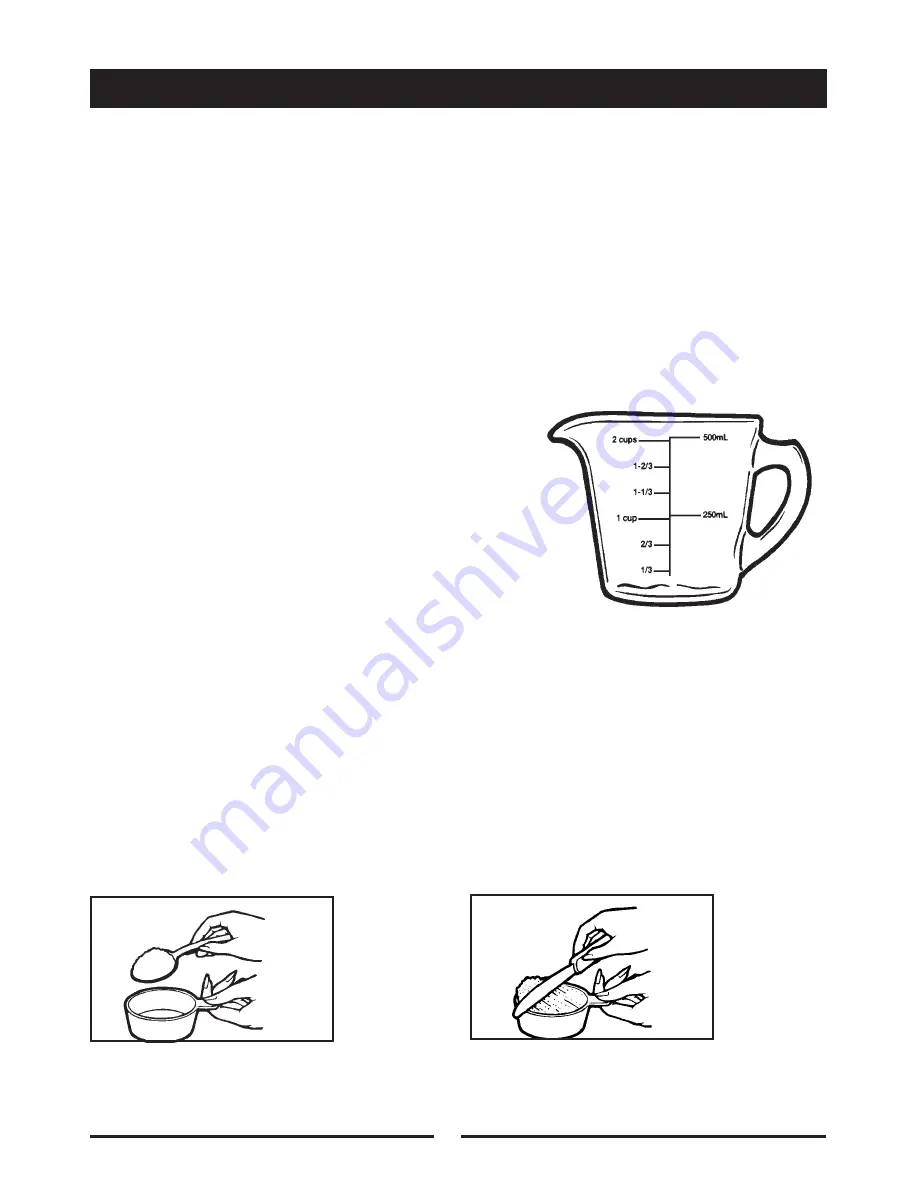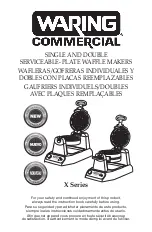
18 BAKING POWDER
Baking Powder is a leavening agent used in quick breads and cakes. This type of leavening agent does not require
rising time before baking as the chemical reaction works when liquid ingredients are added.
19 BAKING SODA
Baking Soda is another leavening agent not to be confused or substituted for baking powder. It also does not require
rising time before baking as the chemical reaction works during baking process.
MEASURING YOUR INGREDIENTS
The key and most important step when using your Breadmaker is measuring your ingredients precisely and
accurately. It is extremely important to measure each liquid and dry ingredient properly or it could result in a poor
or unacceptable baking result. The ingredients must also be added into the baking pan in the order in which they
are given in each recipe. Liquid and dry measurements are done somewhat differently and are as follows:
Liquid Measurements
Either plastic or glass transparent liquid measuring cups must be used
to measure all liquids such as water or milk. When reading amounts, the
measuring cup must be placed on a horizontal flat surface and viewed
at eye level (not on an angle). The liquid level line must be aligned to
the mark of measurements, as just a guess is not good enough as it
could throw out the critical balance of the recipe.
Dry Measurements
Dry measurements (especially flours) must be done using standard size dry measuring cups. These cups are
available in various size graduations. Dry measuring must be done by gently spooning ingredients into the
measuring cup and then once filled, levelling off with a knife (See Fig. 1 and 2 below). Scooping or tapping a
measuring cup will pack the ingredients and you will end up with more than is required. This extra amount could
affect the balance of the recipe. Do not sift the flour.
When measuring small amounts of dry or liquid ingredients (ie. Yeast, Sugar, Salt, Powdered Milk, Honey, Molasses)
a standard measuring spoon must be used. Measurements must be level, not heaping as this small difference could
throw out the critical balance of the recipe.
Your Bread maker produces delicious baked goods with ease. This marvellous machine asks only that you carefully
follow the recipe instructions. In basic cooking, normally "a pinch of this and a dash of that" is fine, but not for
automatic Bread makers. Using an automatic Bread maker requires you accurately measure each ingredient
(especially yeast and water) for best results. For best results, have your ingredients at room temperature unless
otherwise specified.
TIPS ON USING YOUR BREADMAKER
16
Fig 2
Fig 1
















































